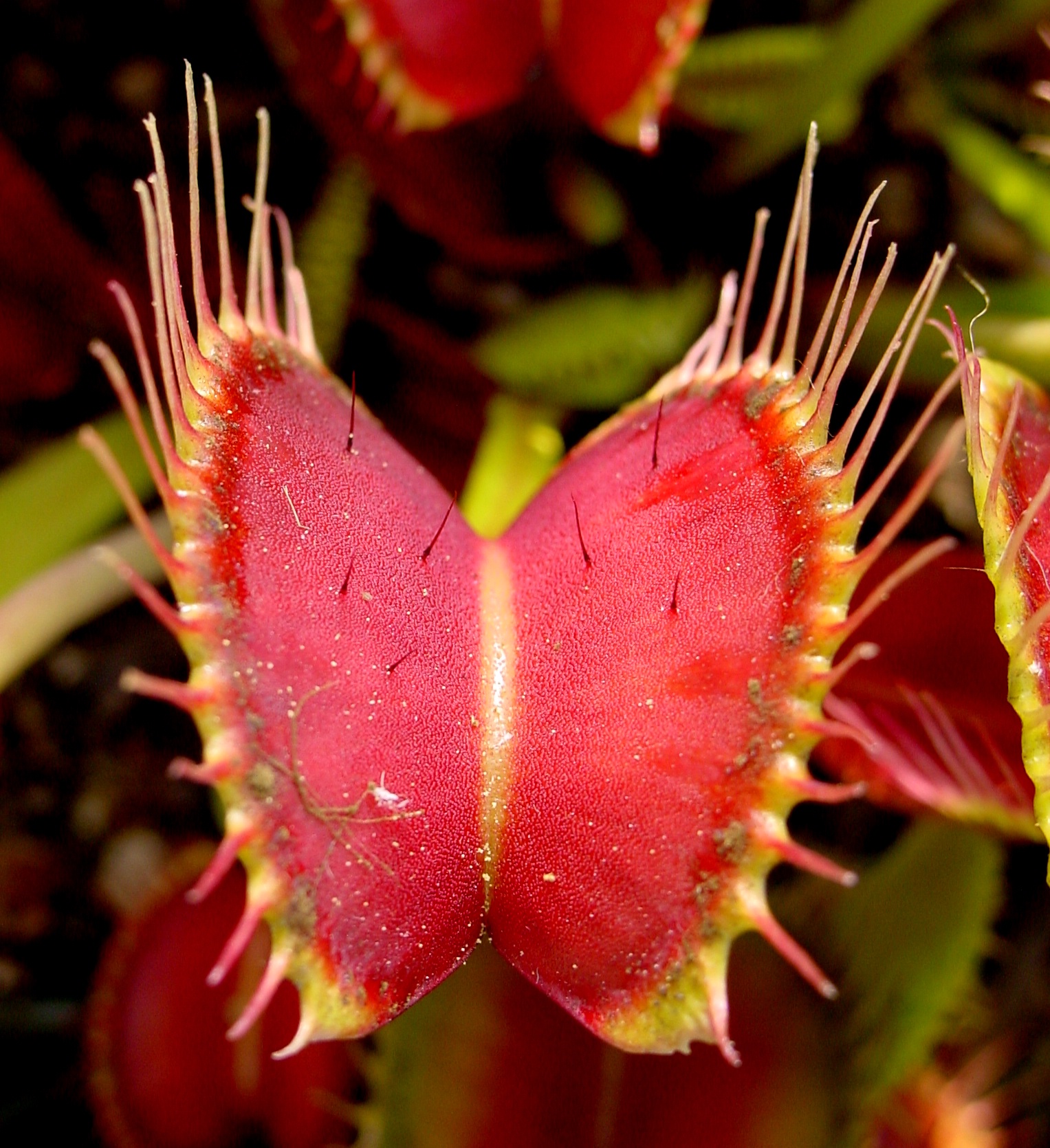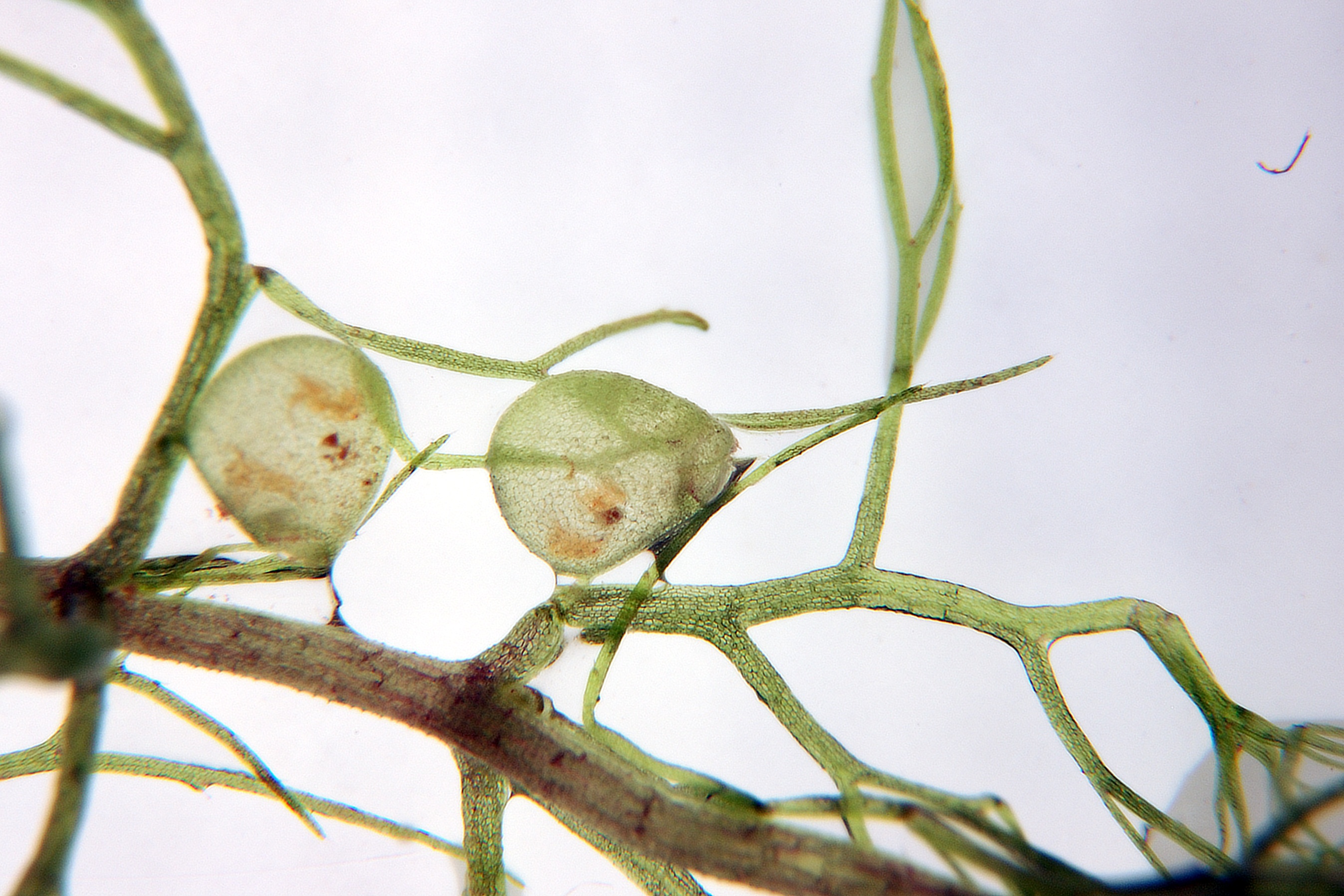|
Utricularia Jamesoniana
''Utricularia jamesoniana'' is a small perennial epiphyte carnivorous plant in the family Lentibulariaceae. It is native to Central America, the Antilles, and northern and western South America. Specifically, it can be found in Bolivia, Brazil, Colombia, Costa Rica, Ecuador, French Guiana, Guatemala, Guyana, Nicaragua, Panama, Peru, Suriname, and Venezuela and on the islands of Guadeloupe, Hispaniola, Dominica, and Martinique. The species was originally published and described by Daniel Oliver in 1860. Its habitat is reported as being mossy tree trunks in montane cloud forest A cloud forest, also called a water forest, primas forest, or tropical montane cloud forest (TMCF), is a generally tropical or subtropical, evergreen, montane, moist forest characterized by a persistent, frequent or seasonal low-level cloud c ...s or lowland rain forests at altitudes from sea level to . It flowers year-round.Taylor, Peter. (1989). '' The genus Utricularia - a taxonomic monograph'' ... [...More Info...] [...Related Items...] OR: [Wikipedia] [Google] [Baidu] |
Martinique
Martinique ( , ; gcf, label=Martinican Creole, Matinik or ; Kalinago: or ) is an island and an overseas department/region and single territorial collectivity of France. An integral part of the French Republic, Martinique is located in the Lesser Antilles of the West Indies in the eastern Caribbean Sea. It has a land area of and a population of 364,508 inhabitants as of January 2019.Populations légales 2019: 972 Martinique INSEE One of the , it is directly north of Saint Lucia, northwest of |
Epiphytes
An epiphyte is an organism that grows on the surface of a plant and derives its moisture and nutrients from the air, rain, water (in marine environments) or from debris accumulating around it. The plants on which epiphytes grow are called phorophytes. Epiphytes take part in nutrient cycles and add to both the diversity and biomass of the ecosystem in which they occur, like any other organism. They are an important source of food for many species. Typically, the older parts of a plant will have more epiphytes growing on them. Epiphytes differ from parasites in that they grow on other plants for physical support and do not necessarily affect the host negatively. An organism that grows on another organism that is not a plant may be called an epibiont. Epiphytes are usually found in the temperate zone (e.g., many mosses, liverworts, lichens, and algae) or in the tropics (e.g., many ferns, cacti, orchids, and bromeliads). Epiphyte species make good houseplants due to their minimal wat ... [...More Info...] [...Related Items...] OR: [Wikipedia] [Google] [Baidu] |
Carnivorous Plants Of South America
A carnivore , or meat-eater ( Latin, ''caro'', genitive ''carnis'', meaning meat or "flesh" and ''vorare'' meaning "to devour"), is an animal or plant whose food and energy requirements derive from animal tissues (mainly muscle, fat and other soft tissues) whether through hunting or scavenging. Nomenclature Mammal order The technical term for mammals in the order Carnivora is ''carnivoran'', and they are so-named because most member species in the group have a carnivorous diet, but the similarity of the name of the order and the name of the diet causes confusion. Many but not all carnivorans are meat eaters; a few, such as the large and small cats (felidae) are ''obligate'' carnivores (see below). Other classes of carnivore are highly variable. The Ursids, for example: While the Arctic polar bear eats meat almost exclusively (more than 90% of its diet is meat), almost all other bear species are omnivorous, and one species, the giant panda, is nearly exclusively herbiv ... [...More Info...] [...Related Items...] OR: [Wikipedia] [Google] [Baidu] |
Carnivorous Plants Of Central America
A carnivore , or meat-eater (Latin, ''caro'', genitive ''carnis'', meaning meat or "flesh" and ''vorare'' meaning "to devour"), is an animal or plant whose food and energy requirements derive from animal tissues (mainly muscle, fat and other soft tissues) whether through hunting or scavenging. Nomenclature Mammal order The technical term for mammals in the order Carnivora is ''carnivoran'', and they are so-named because most member species in the group have a carnivorous diet, but the similarity of the name of the order and the name of the diet causes confusion. Many but not all carnivorans are meat eaters; a few, such as the large and small cats (felidae) are ''obligate'' carnivores (see below). Other classes of carnivore are highly variable. The Ursids, for example: While the Arctic polar bear eats meat almost exclusively (more than 90% of its diet is meat), almost all other bear species are omnivorous, and one species, the giant panda, is nearly exclusively herbivorous. ... [...More Info...] [...Related Items...] OR: [Wikipedia] [Google] [Baidu] |
Utricularia
''Utricularia'', commonly and collectively called the bladderworts, is a genus of carnivorous plants consisting of approximately 233 species (precise counts differ based on classification opinions; a 2001 publication lists 215 species).Salmon, Bruce (2001). ''Carnivorous Plants of New Zealand''. Ecosphere Publications. They occur in fresh water and wet soil as terrestrial or aquatic species across every continent except Antarctica. ''Utricularia'' are cultivated for their flowers, which are often compared with those of snapdragons and orchids, especially amongst carnivorous plant enthusiasts. All ''Utricularia'' are carnivorous and capture small organisms by means of bladder-like traps. Terrestrial species tend to have tiny traps that feed on minute prey such as protozoa and rotifers swimming in water-saturated soil. The traps can range in size from .Taylor, Peter. (1989). ''The genus Utricularia - a taxonomic monograph''. Kew Bulletin Additional Series XIV: London. Aquatic spec ... [...More Info...] [...Related Items...] OR: [Wikipedia] [Google] [Baidu] |
List Of Utricularia Species
There are around 240 species in the genus '' Utricularia'', belonging to the bladderwort family ( Lentibulariaceae). It is the largest genus of carnivorous plants and has a worldwide distribution, being absent only from Antarctica and the oceanic islands. This genus was considered to have 250 species until Peter Taylor reduced the number to 214 in his exhaustive study, '' The genus Utricularia - a taxonomic monograph'', published by HMSO (1989). Taylor's classification is generally accepted, though his division of the genus into two subgenera was soon seen as obsolete. Molecular genetic studies have mostly confirmed Taylor's sections with some modifications (Jobson et al., 2003), but reinstalled the division of the genus in three subgenera. This list follows the subgeneric classification ''sensu'' Müller & Borsch (2005), updated with new information in Müller et al. (2006). For a list of known ''Utricularia'' species by common name, see ''Utricularia'' species by common name ... [...More Info...] [...Related Items...] OR: [Wikipedia] [Google] [Baidu] |
Utricularia Jamesoniana 8
''Utricularia'', commonly and collectively called the bladderworts, is a genus of carnivorous plants consisting of approximately 233 species (precise counts differ based on classification opinions; a 2001 publication lists 215 species).Salmon, Bruce (2001). ''Carnivorous Plants of New Zealand''. Ecosphere Publications. They occur in fresh water and wet soil as terrestrial or aquatic species across every continent except Antarctica. ''Utricularia'' are cultivated for their flowers, which are often compared with those of snapdragons and orchids, especially amongst carnivorous plant enthusiasts. All ''Utricularia'' are carnivorous and capture small organisms by means of bladder-like traps. Terrestrial species tend to have tiny traps that feed on minute prey such as protozoa and rotifers swimming in water-saturated soil. The traps can range in size from .Taylor, Peter. (1989). '' The genus Utricularia - a taxonomic monograph''. Kew Bulletin Additional Series XIV: London. Aquatic ... [...More Info...] [...Related Items...] OR: [Wikipedia] [Google] [Baidu] |
The Genus Utricularia - A Taxonomic Monograph
''The Genus Utricularia: A Taxonomic Monograph'' is a monograph by Peter Taylor on the carnivorous plant genus ''Utricularia'', the bladderworts. It was published in 1989 by Her Majesty's Stationery Office (HMSO) as the fourteenth entry in the ''Kew Bulletin Additional Series''. It was reprinted for The Royal Botanic Gardens, Kew in 1994. Background Taylor's monograph represented the culmination of 41 years of research,Lowrie, A. 2002. ''Nuytsia'' 14(3): 405–410.McPherson, S. R. 2010. ''Carnivorous Plants and their Habitats''. 2 volumes. Redfern Natural History Productions, Poole. which included numerous field trips and herbarium visits (Taylor observed 90 species in habitat and estimated he had examined more than 50,000 herbarium specimens). More than 900 ''Utricularia'' taxon names had to be considered for the revision, the vast majority of which proved to be synonyms.Fleischmann, A. 2012. The new ''Utricularia'' species described since Peter Taylor's monograph. ''Carnivorous ... [...More Info...] [...Related Items...] OR: [Wikipedia] [Google] [Baidu] |
Cloud Forest
A cloud forest, also called a water forest, primas forest, or tropical montane cloud forest (TMCF), is a generally tropical or subtropical, evergreen, montane, moist forest characterized by a persistent, frequent or seasonal low-level cloud cover, usually at the canopy level, formally described in the ''International Cloud Atlas'' (2017) as silvagenitus. Cloud forests often exhibit an abundance of mosses covering the ground and vegetation, in which case they are also referred to as mossy forests. Mossy forests usually develop on the saddles of mountains, where moisture introduced by settling clouds is more effectively retained. Cloud forests are among the most biodiversity rich ecosystems in the world with a large amount of species directly or indirectly depending on them. Other moss forests include black spruce/feathermoss climax forest, with a moderately dense canopy and a forest floor of feathermosses including ''Hylocomium splendens'', ''Pleurozium schreberi'' and ''Ptil ... [...More Info...] [...Related Items...] OR: [Wikipedia] [Google] [Baidu] |
Montane
Montane ecosystems are found on the slopes of mountains. The alpine climate in these regions strongly affects the ecosystem because temperatures fall as elevation increases, causing the ecosystem to stratify. This stratification is a crucial factor in shaping plant community, biodiversity, metabolic processes and ecosystem dynamics for montane ecosystems. Dense montane forests are common at moderate elevations, due to moderate temperatures and high rainfall. At higher elevations, the climate is harsher, with lower temperatures and higher winds, preventing the growth of trees and causing the plant community to transition to montane grasslands, shrublands or alpine tundra. Due to the unique climate conditions of montane ecosystems, they contain increased numbers of endemic species. Montane ecosystems also exhibit variation in ecosystem services, which include carbon storage and water supply. Life zones As elevation increases, the climate becomes cooler, due to a decrease in a ... [...More Info...] [...Related Items...] OR: [Wikipedia] [Google] [Baidu] |
Daniel Oliver (botanist)
Daniel Oliver, FRS (6 February 1830, Newcastle upon Tyne – 21 December 1916) was an English botanist. He was Librarian of the Herbarium, Royal Botanic Gardens, Kew from 1860–1890 and Keeper there from 1864–1890, and Professor of Botany at University College, London from 1861–1888. In 1864, while at UCL, he published ''Lessons in Elementary Biology'', based upon material left in manuscript by John Stevens Henslow, and illustrated by Henslow's daughter, Anne Henslow Barnard of Cheltenham. With a second edition in 1869 and a third in 1878 this book was reprinted until at least 1891. Oliver regarded this book as suitable for use in schools and for young people remote from the classroom and laboratory. He was elected a member of the Linnean Society, awarded their Gold Medal in 1893, and awarded a Royal Medal by the Royal Society in 1884. He married in 1861 and was the father of two daughters and a son, Francis Wall Oliver. In 1895, botanist Tiegh published '' Oliverella'', a ... [...More Info...] [...Related Items...] OR: [Wikipedia] [Google] [Baidu] |





_2.jpg)

